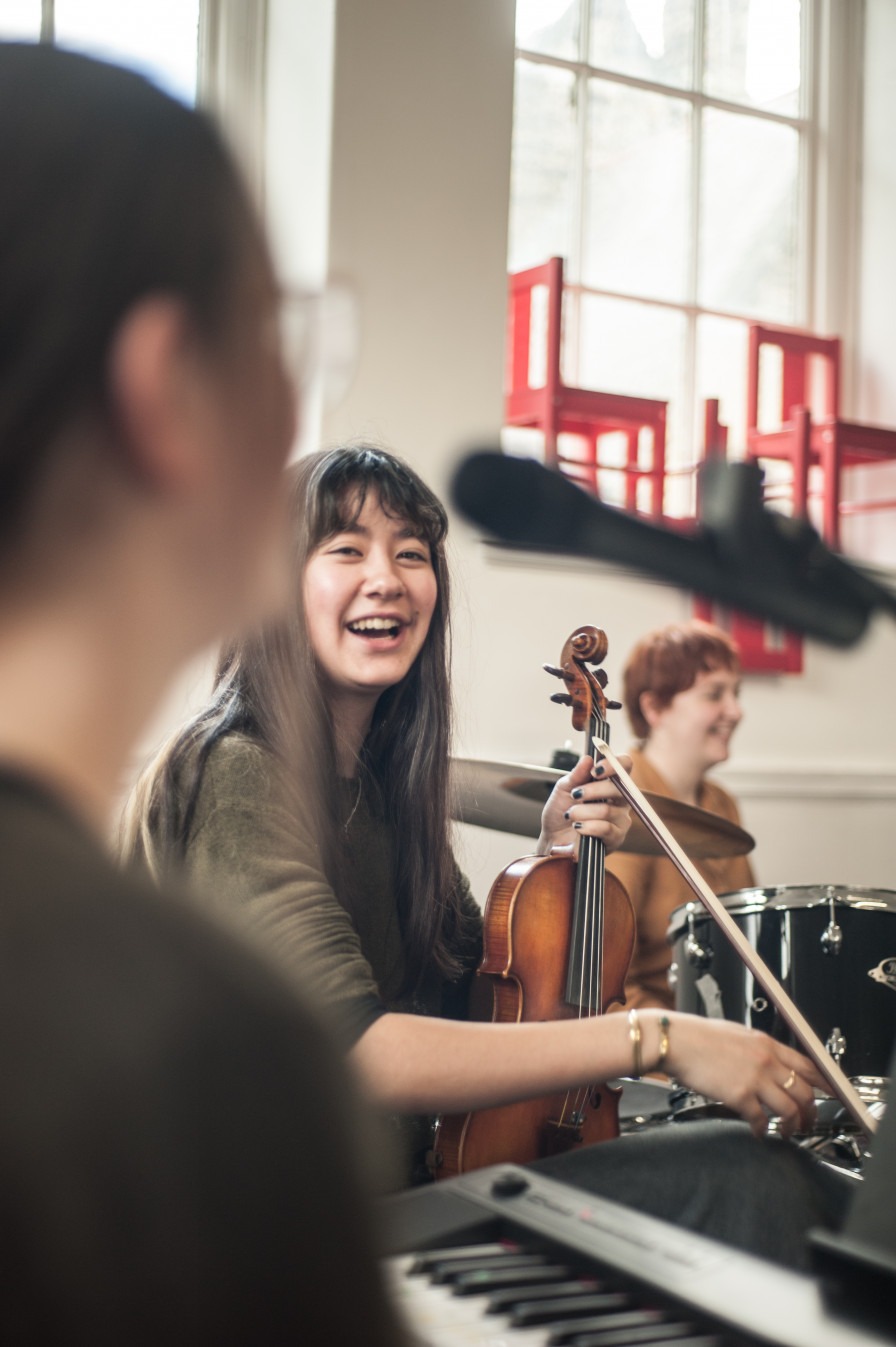A smile invites a smile

TiPP ran a development day for our musicians to explore how artsist from different backgrounds, instruments, genres and experience can work effectively together. Emily van Zoonen is a theatre practitioner on placement with us at the moment so we invited her along. Here's what she had to say about the experience...
Coming into the music session as a Theatre Maker I was both excited and also quite anxious. It isn’t that I’m unfamiliar with music but I do sense that it isn’t my expertise and it makes me nervous to showcase in front of a group of musicians regardless of whether they’re classically trained or not. But by the first exercise being simply ‘grab any instrument, it doesn’t need to be your own or one you’re familiar with’ made me feel like I could just jump straight in without being capable of anything musically. Because simply said, music is noise. So by just starting with that, noise, and going straight ahead into the ‘doing’ took away any self-judgement right from the beginning. Also, importantly, if everyone is doing it at the same time you can feel quite safe and hidden in the noise and sounds everyone else is making around you.
This isn’t dissimilar from how I would start a drama session. Avoid the talking and analysing and just go straight in. Get people off chairs and ‘onto the floor’ and get started because once you’ve started, continuing on from there is quite easy. Don’t give time for self-doubt.
But I’ve jumped the gun a little here. As it’s a session with a group of facilitators, we did start with one thing before the ‘doing’. A question, but quite an important question. ‘What is music for you, why do you do it and/or what does it give you?’. A simple question that everyone has an own answer to that can never be wrong. The reason why it’s so important is because it brings forward someone’s reason for doing it and in that it brings up their enthusiasm for sharing, playing, showing and probably also facilitating. Once a person can put forth in words their why and share their enthusiasm, it’s an invitation for another to join in with that enthusiasm. I found it was quite similar to laughing. If people are laughing, sometimes you’ll join in not even knowing why because laughing is infectious. Like a smile will invite a smile, enthusiasm will invite enthusiasm. So when you’re working with a group, regardless of context, age, background etc., find the thing that excites you and makes you enthusiastic and it will be an automatic invitation for joining in.
Back to the session. Grab an instrument and let’s get going. The facilitator places themself a bit like a conductor and applies simple musical basics (for lack of better musical terms in my vocabulary) to diversify the noise into sounds and the sounds into music. Simple gestures for stop and go, louder, softer, and from there into asking some to go louder, some to go softer. Others to stop and someone else to shine. That moment of ‘live composing’ made me feel (and I imagine a participant could feel) like they’re capable, musical, rhythmic and part of a process that makes something which sounds pretty cool. A group moment to boost confidence and most importantly fun to set a great tone for later on in the session or following sessions.
Later on we started working more in groups and discussed ‘what about if a young person asks for or is interested in a specific genre?’. We threw up some artists, songs and styles and split up and started working with known music from Amy Winehouse. This was definitely a moment where I feel like music is an easy entrance for anyone to go ahead and join in. Much easier than if ‘theatre’ were to be a starting point. Where theatre is less accessible (imagine asking a group of young people ‘what kind of theatre are you into’?), everyone listens to music. It made me realise that music could be an important starting point for ‘theatre’ sessions because it can be more accessible. Once the music is there, and a shared enthusiasm, you could go from there and find ways to add narratives to music or maybe even step away from the music later in the session.
For example: Taking Amy Winehouse as a starting point, someone could say the colour of her music or the ‘vibe’ is a bit more smooth (whatever that may mean for the specific individual) and there’s lots of use of metaphors. It made me curious to imagine; ‘what if we tried turning those metaphors into literal things?’. How could we make a scene from it, how could we depict the metaphor ‘on the floor’. Or even, let’s take a daily situation and now add smooth to it. How would we do that, could we even do that? Quite an abstract idea and thought, no idea if it could work, but as I said, it made me curious to the ‘how can we go on from here?’.
How can we start a conversation between music and theatre? How can we use the one to make the other more accessible? How could we add them onto each other and then later on strip one or the other away? I do imagine, I do wonder.
Photo Credit: Sangita Mistry
